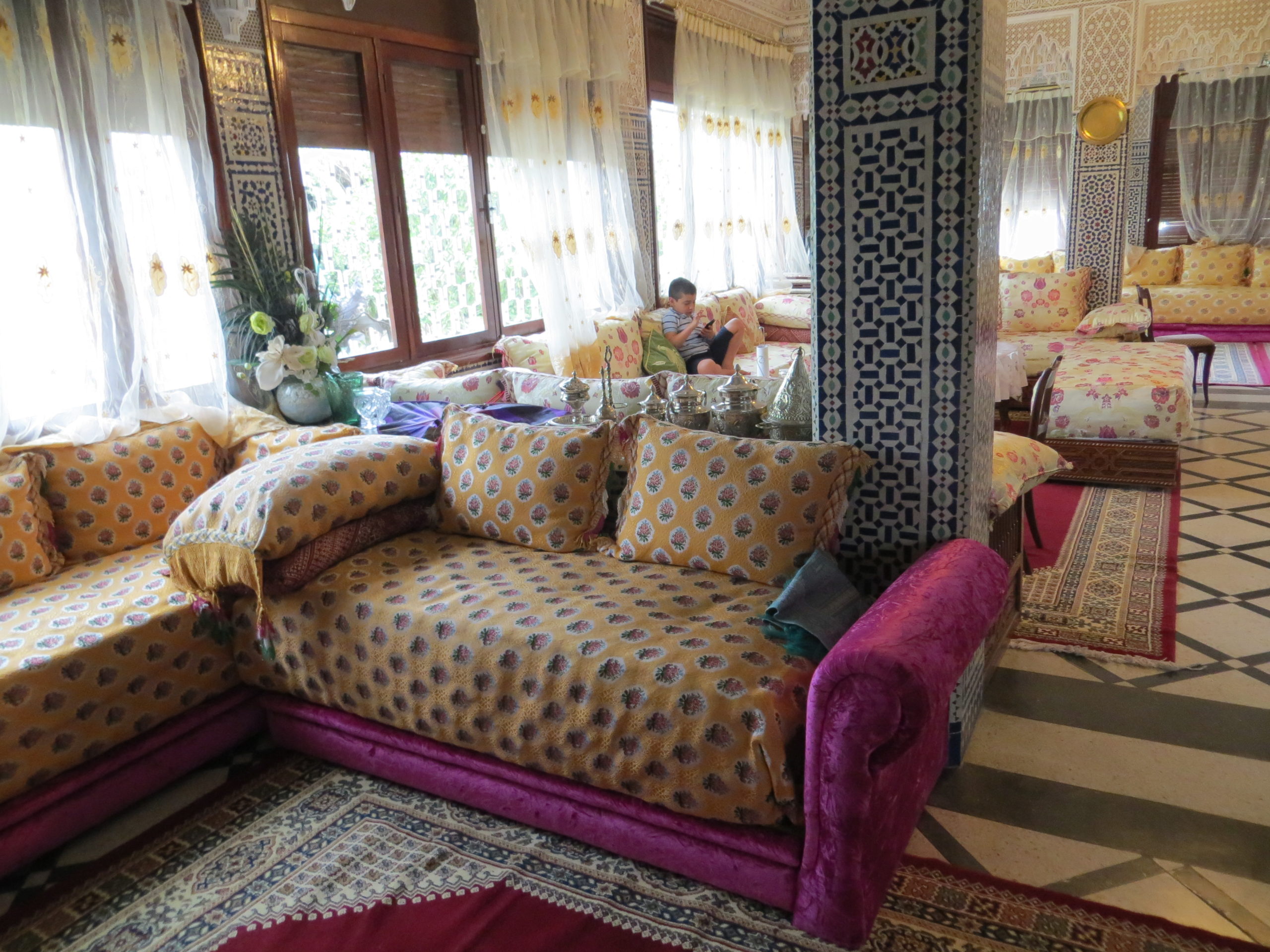Dr. Ann Williams, Metropolitan State University of Denver
Developing cross-cultural competence in the foreign language class

Un salon marocain – three rooms with one purpose – to welcome guest
Cross-cultural competence and linguistic competence go hand-in hand in language classes today. When I talk to people outside the field of foreign languages sometimes it isn’t clear to them that knowing a foreign language means knowing (to the extent possible) the cultures that use it. Cross-cultural competence and the artifacts and experiences that allow us to move toward it need to be studied with as much seriousness of purpose as language, as is made clear in the Cultural competency standards created by the American Council on the Teaching of Foreign Languages. When we teach a modern language, our goal is to give students a chance to know and to communicate with the peoples of the world who use those languages.
The ACTFL standards show that there is a consensus within the profession that language learning and culture learning are inextricably intertwined. One way to prepare students to function in an unfamiliar culture is to help them develop the ability to observe and analyze target cultures by walking them through the analysis of, for example, an important cultural practice (with its attendant products and perspectives). Not only are they exposed to factual information about the target culture, they develop strategies to seek out important values that underpin cultural practices in other cultures. This, in turn, gives them tools to better communicate with members of the foreign cultures, using not only the language that they have learned but their cross-cultural skills as well.
And from a broader perspective, developing students’ abilities to observe and analyze other cultures and to function in them allows them to look at their own culture and the various cultures that reside within. We often think of language learning in terms of access to the global but the perspectives provided through foreign language study are of local relevance as well. Our diverse communities cry out for ways to come together and learners of every language are bridge-builders “par excellence”. The transferable skills found at every stage of development of cross-cultural competencies enrich students’ lives and help them to adapt to the ever-changing world, even the one around them.